

Credit: Rachel Hulin (top left), Christopher Garrison (bottom right)
It may not be scientifically proven (yet) that a picture is worth a thousand words, but images are undoubtedly a critical part of creating engaging content.
Images can evoke emotions or illustrate a point more clearly. They break up blocks of text in a layout to create an appealing flow.
But not every image has the same impact. Finding the right photos or illustrations to fit your project can be a challenge, but that’s where we come in. We can help create, source, and select the best set of images for your content.
Here are some things to consider as you start planning.
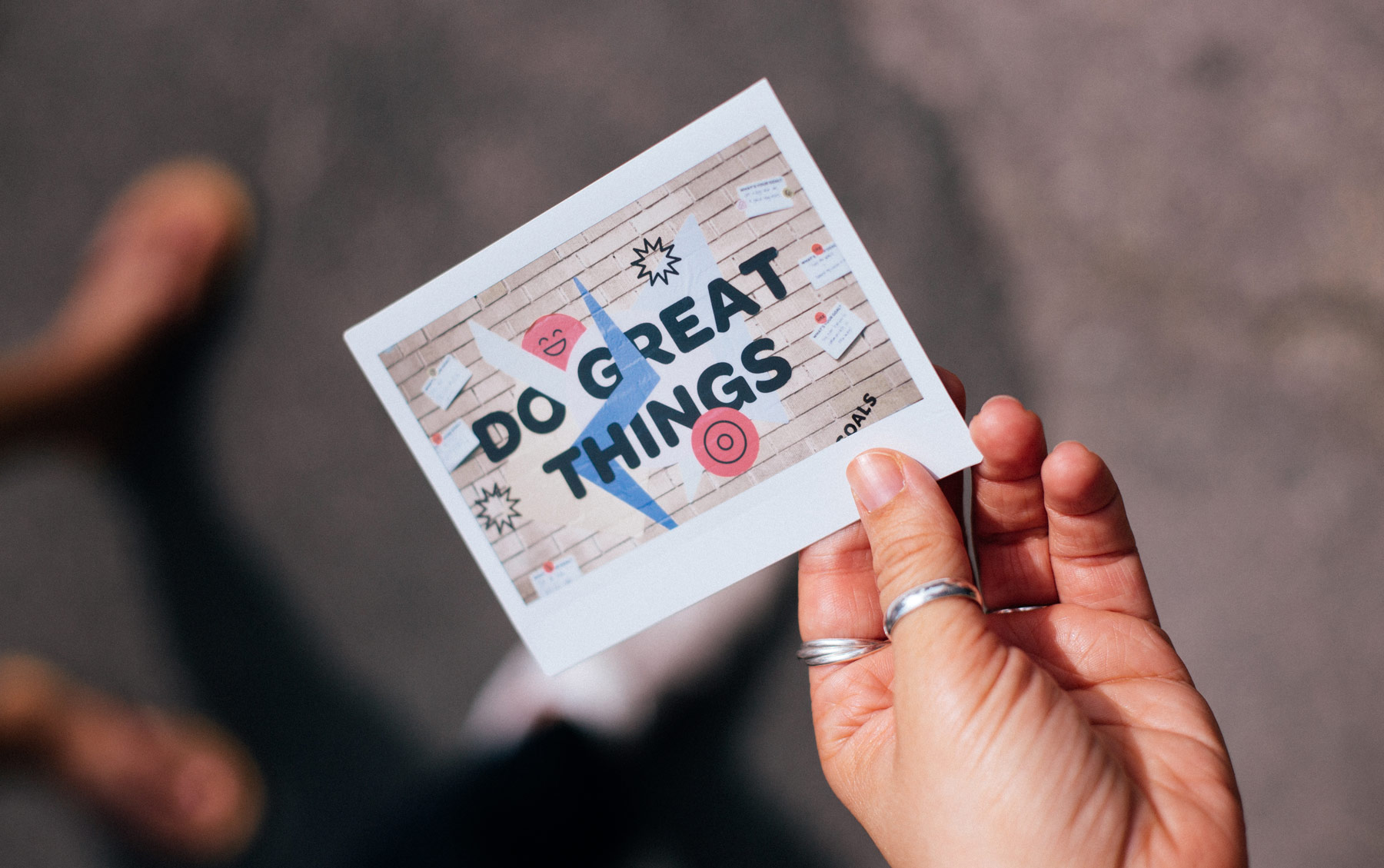
Credit: Eli DeFaria
Custom-created images or existing stock?
The answer to this question will likely come down to timing and budget.
For custom images, you’ll need to hire a photographer or illustrator to create it for you (more on how that works a little later). The advantage of custom artwork is that it’s tailored to your specific needs and will likely be more authentic to your brand. The disadvantage: it’s more expensive and takes more time.
If you don’t have the budget or time to schedule a photoshoot, there are many stock images resources out there. In addition to free sites like Unsplash and Pexels, there are affordable options like iStock and Adobe Stock that include many high quality images in their library.
While stock imagery is the perfect choice for some projects, it also comes with downsides. The vast image libraries can be overwhelming to sift through and because the images are not proprietary, they can be used by anyone — including your competitors or organizations that are at odds with your values.
You also need to pay close attention to the licensing guidelines for stock images. Some can be edited and used in unlimited ways, while others are priced based on their size, placement, number of users, or have limitations on how and where they can be used.
Finally, while there are lots of fantastic stock images, if you don’t choose them thoughtfully, they run the risk of looking too stock-y. That means fake, generic, or just corny. This can work against your design by making you seem bland and inauthentic.

A stock photo or illustration in generic business settings where the subjects are stiff and posed won’t help you look unique. Credit: iStock.com/Paperkites (left), iStock.com/elenabs (right)

A stock photo or illustration in generic business settings where the subjects are stiff and posed won’t help you look unique. Credit: iStock.com/Paperkites (top), iStock.com/elenabs (bottom)
To decide on a budget for imagery, you should consider where an image will be seen. For important communication points that must engage your audience and be memorable—for example: an ad campaign, your website landing page, or the cover of an influential publication—choosing a custom image will have the most impact. For small spot illustrations on lower priority pages of a report or website stock images may be the better choice.
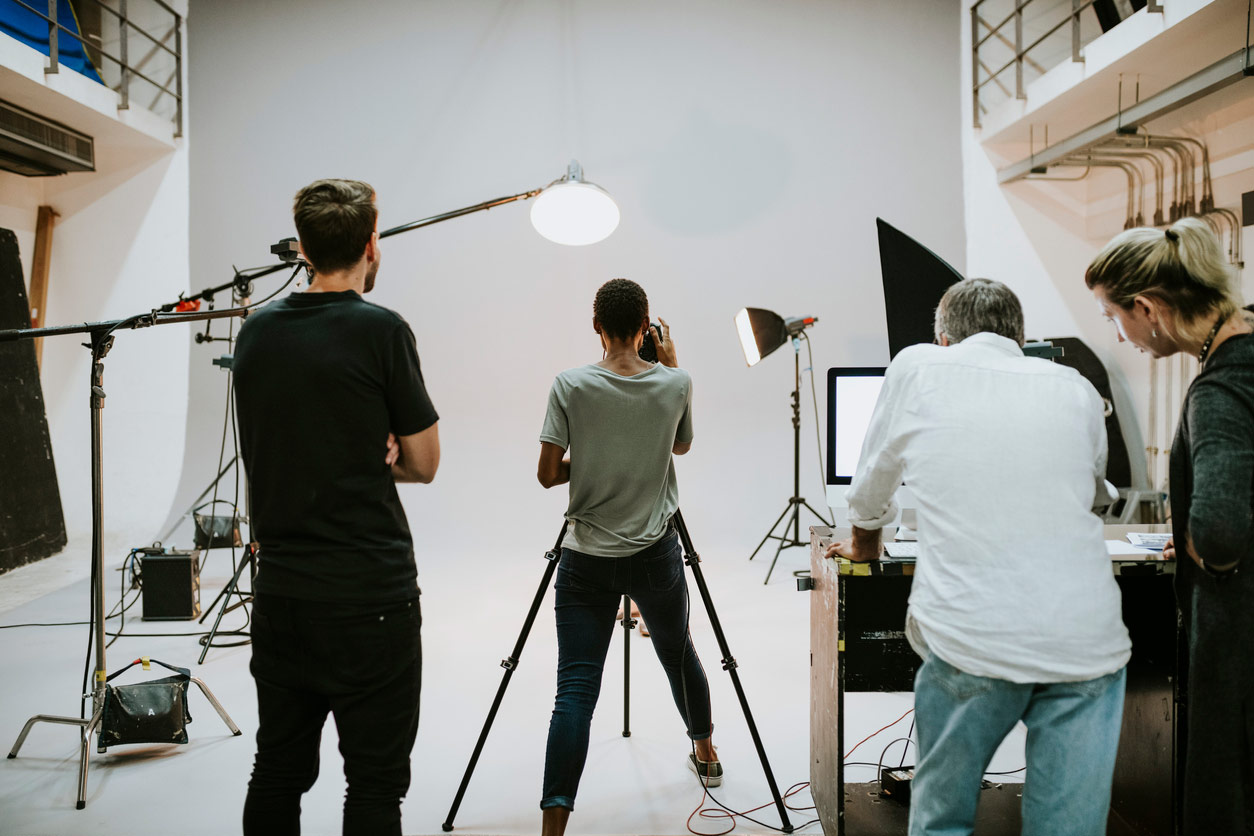
Credit: iStock.com/Rawpixel
Hiring a Photographer
Just as you would when hiring a designer, you should look at photographers’ portfolios and be sure that their style harmonizes with your brand and that they are experienced in the types of images you need. Photographing products and architecture is very different from portraits and people (though plenty of photographers can work with multiple types of subjects). You may want photographs that are candid in natural light or you may want highly posed and styled imagery.

A product shot with studio lighting. Credit: Christopher Garrison
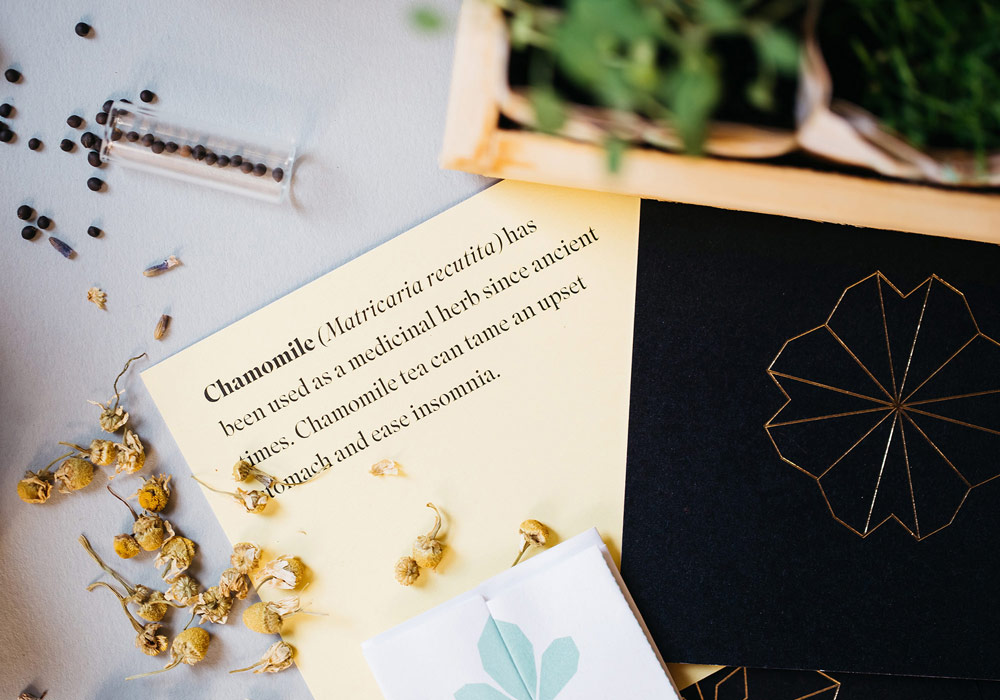
A product shot with natural lighting. Credit: Eli DeFaria
We can recommend photographers based on your needs and location and help with planning.
We’ll communicate with the photographer about any specifications such as vertical or horizontal orientation; or where images should incorporate negative space for type. A photographer who knows your brand well may be able to work on their own, but it can also be helpful to have our team or yours on location to oversee the process and avoid a potential reshoot.
Some shoots only take a few hours and others might have a detailed shot list that comes together over multiple days. And keep in mind that a photographer will need a few days to a few weeks for processing the photos so we’ll want to schedule the photoshoot to take place well in advance of the design phase of your project.
Retouching
A photo can be enhanced through subtle retouching like correcting color and removing flaws or tell a greater story through complex compositing. If an image needs a lot of adjustment, we can hire a retouching specialist.
Finally remember that legal restrictions and licensing also come into play when you hire a photographer. Discuss this with them to be sure that you have all the necessary permissions and that everyone featured in the images have signed a model release.
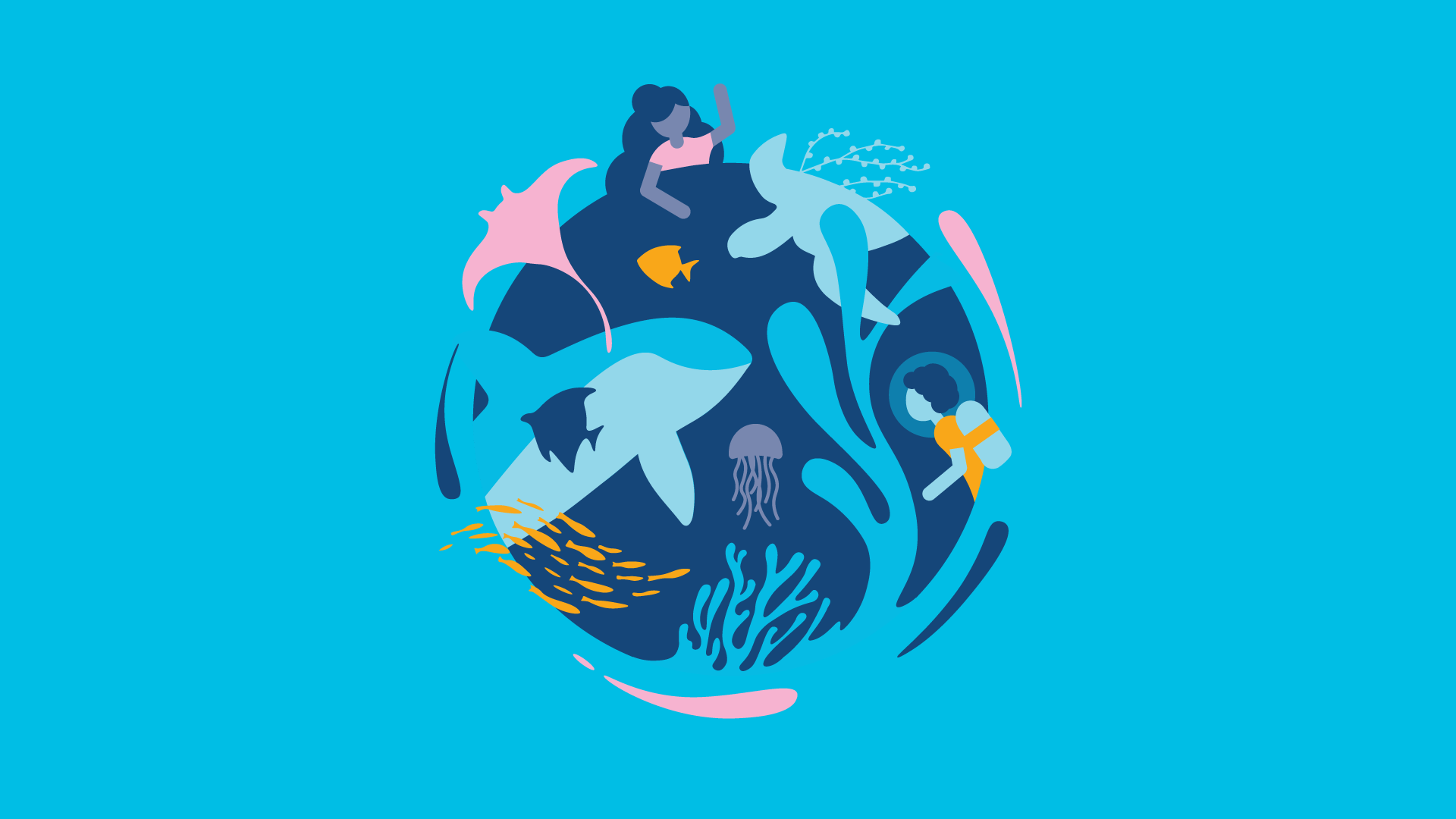
Brand illustration for World Oceans Day. Credit: Studio Rainwater
Illustration and More
Illustration can be a great solution when organizing an in-person photo shoot isn’t possible (like during a global pandemic) or doesn’t make sense for the subject matter.
We often create custom illustrations in house including spot graphics, patterns, and icons. And we can also help select and hire an illustrator for their particular style. We would work closely with them to provide guidelines for branding, color, typography, and other elements that would inform the work.
There are other possibilities for creating and sourcing images looming on the horizon. From customizable 3D templates to AI art, more and more exciting and cost-effective options will be introduced as technology evolves.

Finally, don’t forget that images can be in motion on digital platforms. It’s great to plan for photographs and illustration that can also be used in video or animation.
Brand Image Guidelines
Once the style of images has been established for your brand, photo and illustration guidelines can be included in your brand manual. This is particularly important if you have a large organization and many people who source images or hire photographers, but it can be helpful for small teams as well.
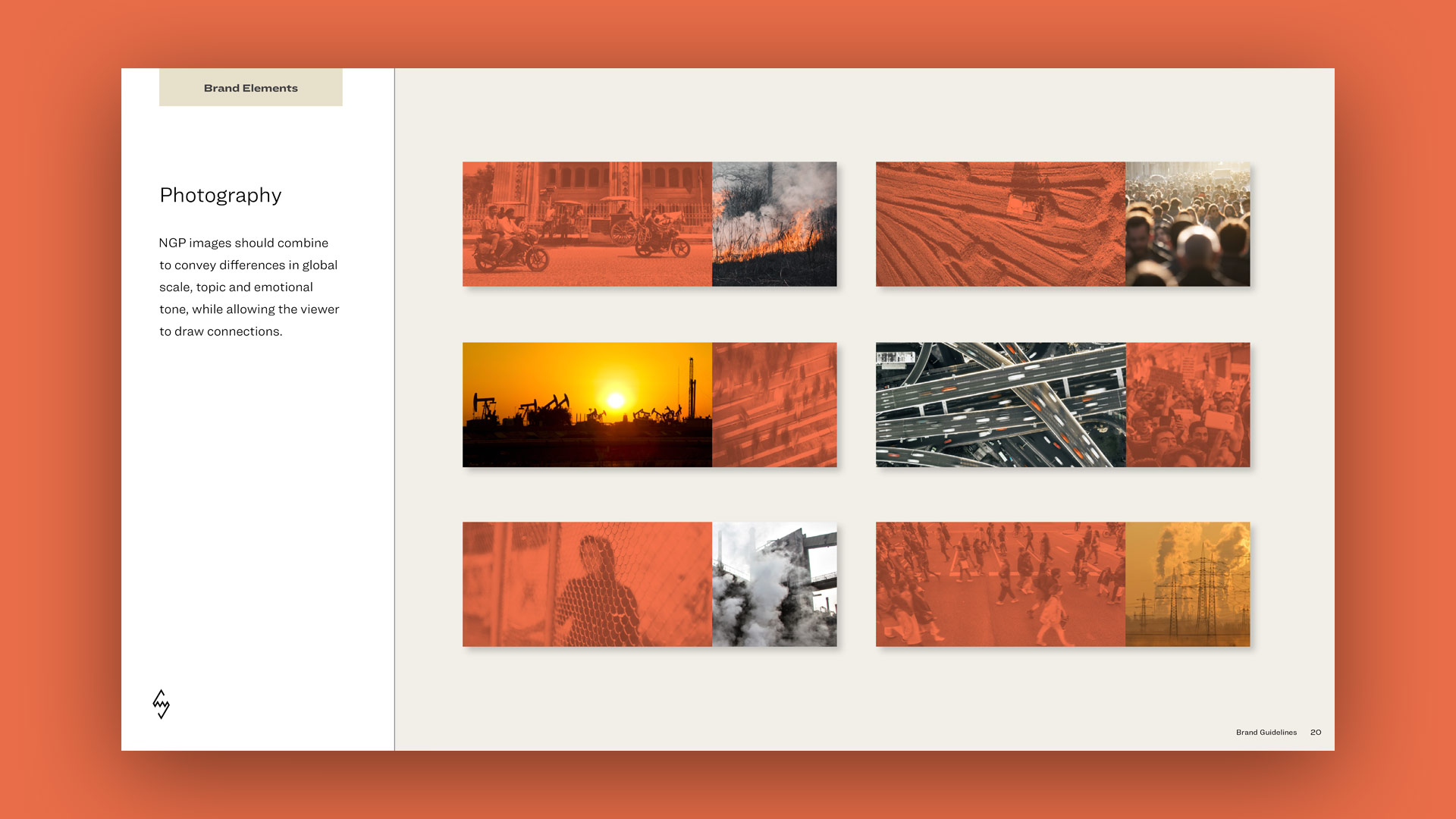
Image guidelines created for the Institute for New Global Politics.
Guidelines could explain how to use images from the existing library or provide parameters for searching for or creating new imagery. It should be clear why the approved imagery is connected to the brand ethos.


